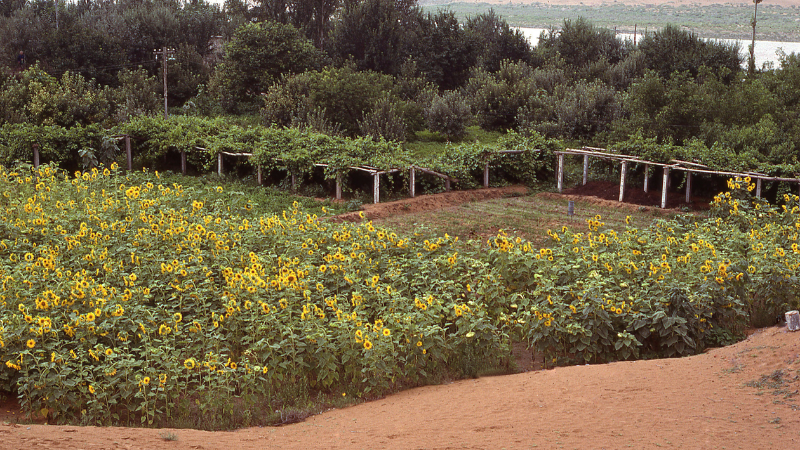Agroforestry, a time-honored practice dating back thousands of years, is stepping into the limelight as a key strategy in combating climate change and promoting biodiversity. By integrating trees with crops and livestock on the same parcel of land, agroforestry enhances ecosystem services, supports biodiversity, sequesters carbon, and increases resilience to climate extremes. Let’s delve into the vital role agroforestry plays in shaping a sustainable and resilient future.
Nurturing Biodiversity
Agroforestry systems are hotspots of biodiversity. They create diverse habitats that attract a wide range of organisms, from microorganisms in the soil to birds in the canopy. This variety is essential to maintaining ecological balance, preventing the domination of any single pest, and promoting overall system health.
By including perennial crops and trees that flower and fruit at different times, agroforestry ensures a steady food supply for pollinators throughout the year. Hedgerows and windbreaks provide habitats for birds and beneficial insects, while the incorporation of aquatic elements, such as fish ponds, can support amphibians and other aquatic life.
Sequestering Carbon and Mitigating Climate Change
Trees are phenomenal carbon sinks. Through photosynthesis, they absorb carbon dioxide, storing carbon in their biomass and enriching the soil with organic matter. By incorporating trees into agricultural landscapes, agroforestry systems can sequester significant amounts of carbon, making them potent tools in the fight against climate change.
Moreover, trees’ ability to cast shade, reduce wind speeds, and release moisture into the atmosphere can create microclimates, helping to mitigate some of the localized effects of climate change. This function could be increasingly important as global temperatures continue to rise.
Promoting Climate Resilience
Agroforestry systems are inherently resilient to climatic extremes. Their diverse and multi-layered structures can better withstand environmental shocks compared to conventional monocultures.
When a storm hits, the trees’ deep root systems anchor the soil, preventing erosion and loss of topsoil. During a drought, those same roots reach water unavailable to shallower-rooted crops. The tree canopies offer shade that protects crops from scorching sun and reduce evaporation from the soil surface. These traits, combined, make agroforestry a robust system even in the face of changing climatic conditions.
Supporting Sustainable Livelihoods
Agroforestry also bolsters sustainable livelihoods. By diversifying farm outputs, agroforestry can provide farmers with multiple income streams, buffering them against crop failures or market fluctuations. Products can range from fruits, nuts, and timber to honey, mushrooms, and medicinal plants.
Furthermore, agroforestry can offer climate-smart solutions for the millions of farmers living on degraded lands. By combining agriculture and forestry, it’s possible to restore these lands’ productivity while also providing farmers with food, income, and resilience against climate shocks.
The Path Forward with Agroforestry
Despite its many benefits, agroforestry is not a panacea. It requires careful design and management, considering local ecological and socio-economic contexts. However, its potential for addressing numerous environmental and social challenges concurrently makes it an invaluable tool in our arsenal.
As we move towards a future characterized by climate uncertainties, it is crucial to adopt and promote practices like agroforestry. With its emphasis on biodiversity, carbon sequestration, resilience, and sustainability, agroforestry embodies the type of forward-thinking and regenerative agriculture we need in the 21st century.
Education and Policy Support
To fully realize the potential of agroforestry, however, we need to overcome various obstacles. Farmers, extension agents, and policymakers need education about agroforestry’s benefits and best practices. It’s critical to dispel the misconception that agriculture and forestry are separate disciplines. Instead, we should foster understanding of how these two can synergistically coexist and promote one another.
On a policy level, agroforestry often falls between the cracks, with neither agricultural nor forestry policies fully addressing its unique nature. Reforming this status quo is essential. Policies that explicitly recognize and support agroforestry — such as granting farmers long-term rights to trees, providing subsidies for establishing agroforestry systems, or offering payments for ecosystem services — could significantly increase its adoption.
Research and Innovation
Agroforestry is an incredibly diverse field with many potential configurations and species combinations. More research is needed to optimize these systems for different contexts, accounting for factors like climate, soil, and market demand.
Further innovation is also crucial. For example, developing fast-growing tree species that produce high-quality timber and biomass could increase agroforestry’s economic attractiveness. Additionally, digital technologies, such as remote sensing and data analytics, could help manage these complex systems more effectively.
Collaboration and Community Engagement
Agroforestry is most successful when it is rooted in the local community. Farmers are more likely to adopt agroforestry if they see it benefitting their neighbors and if they have access to local support networks. Collaborative initiatives, like community nurseries, shared processing facilities, or farmer cooperatives, can also enhance agroforestry’s viability and impact.
Conclusion: Embracing Agroforestry for a Resilient Future
In the face of climate change, biodiversity loss, and the myriad other challenges we face, it’s clear that our current agricultural systems need to evolve. Agroforestry offers a promising path forward — one that not only produces food, fiber, and income, but also fosters biodiversity, sequesters carbon, and enhances climate resilience.
By embracing agroforestry, we can reimagine our landscapes as vibrant mosaics of crops and trees, buzzing with life, and bursting with productivity. This is not just an aspirational vision. It’s a practical and attainable goal that can drive our agriculture towards a sustainable and resilient future. Through education, policy support, research, and community engagement, we can make this vision a reality and safeguard our planet for generations to come.








